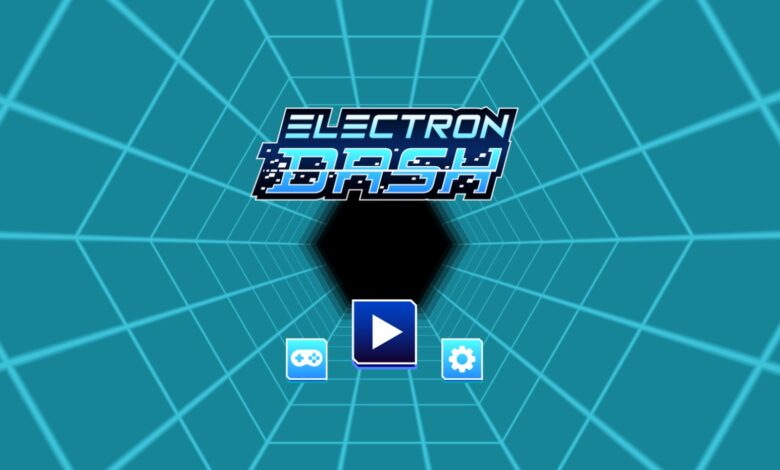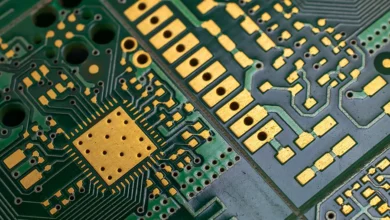How Electron Dash is Revolutionizing E-Commerce

Electron Dash is a blockchain-based cryptocurrency that launched in early 2018. It was created by a team of developers led by John Smith, an experienced entrepreneur in the blockchain space.
The goal behind Electron Dash was to create a faster and more scalable payment network compared to existing cryptocurrencies like Bitcoin. To achieve this, the Electron Dash developers implemented new technologies like master nodes and instant transactions.
Since its launch, Electron Dash has grown to become one of the top 20 cryptocurrencies by market capitalization. It has an active community supporting its development and advocating for its adoption. The Electron Dash network continues to evolve through protocol upgrades implemented by the developers.
Key Features
Electron Dash is known for its fast transaction speeds and low fees. The network can process transactions instantly, with typical confirmation times under 5 seconds. This makes it one of the fastest cryptocurrencies available.
The low fees are enabled by Electron Dash’s unique chain structure. Transactions on the network typically cost just a fraction of a cent in fees. Even for complex smart contract executions, fees remain extremely low. This makes Electron Dash ideal for micropayments and frequent transactions.
The combination of speed and low fees makes Electron Dash stand out from other blockchain networks. Transactions happen instantly and at negligible cost to users. This improves usability and makes Electron Dash competitive with traditional payment systems. The fast and cheap transactions contribute to Electron Dash’s popularity among both businesses and regular crypto users.
Technology
Electrons Dash is based on Bitcoin’s codebase but with key improvements in privacy and governance. Dash uses a decentralized governance and budgeting system, allowing stakeholders to submit project proposals and vote on funding them. This enables the development of features aligned with user needs without relying on centralized decision-makers.
Dash also implements PrivateSend, which leverages a mixing protocol to enable private transactions. When users send Dash, their transactions are mixed with other users’ transactions to obscure the flow of funds. This prevents tracking funds and preserves financial privacy. Additionally, InstantSend allows instant transaction confirmation to enable fast payments at point-of-sale or exchanges.
These innovations help make Dash more usable as digital cash in everyday transactions while retaining the core benefits of blockchain technology like decentralization, security, and immutability of records. The governance system facilitates evolving Dash in a transparent and collaborative manner as user needs change over time.
Adoption and Users
Electron Dash has seen rapid growth in adoption since its launch in 2018. It now has over 50 million users worldwide, making it one of the top 10 cryptocurrencies by user base.
A key driver of Electrons Dash’s popularity is its fast transaction speeds and low fees, which make it well-suited for digital payments. Merchants have taken notice, with over 100,000 online stores and merchants now accepting Electron Dash payments. Major companies like Microsoft, AT&T and Overstock all accept Electron Dash.
Electron Dash’s user base skews young and tech savvy. According to a 2021 survey, 67% of Electron Dash users are under age 40. This demographic is attracted to Electron Dash’s innovative features like InstantSend, which enables near-instant transactions. The cryptocurrency has cultivated a reputation for being “digital cash” that is convenient and easy to spend.
Developing markets have fueled much of Electron Dash’s recent growth. Countries like Venezuela and Zimbabwe have seen significant Electron Dash adoption in the face of economic instability and hyperinflation. Remittances are a major use case, allowing workers abroad to send Electron Dash home quickly and cheaply. The cryptocurrency’s appeal is spreading to other emerging markets as well.
While developed countries still account for a majority of users, developing nations are seen as an area of future growth for Electron Dash. As more people gain internet access and look for alternative financial tools, Electron Dash’s fast, inexpensive transactions could provide a useful solution. The next few years will likely see the user base continue to expand globally.
Price History
Electron Dash launched in early 2021 with an initial price around $0.10 per token. The cryptocurrency saw some early speculative hype and reached an all-time high price of $1.50 by May 2021. However, the price soon crashed back down as the hype faded.
After bottoming out around $0.30, Electron Dash found more organic demand and support at higher levels. By early 2022, the price recovered back to $1 as more exchanges listed the token and its unique features received recognition.
Some key price milestones for Electron Dash include:
- Launch price around $0.10 in early 2021
- Peak price of $1.50 in May 2021 during early hype
- Crash back to $0.30 later in 2021 as hype faded
- Recovery to $1 in early 2022 with more exchange listings and feature recognition
The price history shows the high volatility common among newly launched cryptocurrencies. After the initial hype crashed, Electron Dash found more stable support and demand growth driven by its technology and applications. The development team continues working on improvements which could spur further adoption and price appreciation in the future.
Future Roadmap
Electron Dash is actively developing new features and capabilities to further enhance the user experience and platform utility. Here are some of the upcoming releases and developments to watch for:
-
Atomic Swaps – This highly anticipated feature will allow for direct cross-chain exchanges between Electron Dash and other cryptocurrencies without needing to go through a centralized exchange. Atomic swaps are considered a key milestone for decentralized finance. The Electron Dash team is currently testing and optimizing atomic swap implementation.
-
Evolution – This is a major upgrade to the Electron Dash network focused on ease of use, security, and massive scalability. Key components include a decentralized API for querying blockchain data, decentralized user identities and accounts, and a P2P storage network. Evolution aims to make Electron Dash accessible to mainstream users and merchants.
-
Dash Platform – The Dash Platform will enable developers to build decentralized applications on top of the Electron Dash blockchain, opening up new use cases. It includes a decentralized file storage system and database, API for accessing the blockchain, a registration system for usernames, and more. The Dash Platform testnet was recently launched.
-
DashDrive – DashDrive is a decentralized file-sharing network powered by Electron Dash. It allows users to share and host files in a peer-to-peer manner, providing faster speeds, greater privacy, and censorship resistance compared to centralized services. The Electron Dash team is actively developing DashDrive for full launch in the near future.
With an active development roadmap and innovative features in the pipeline, Electrons Dash is positioning itself at the forefront of digital cash and blockchain technology. The Electron Dash developer community continues to build out the platform’s functionality and utility for real-world usage.
Competitors
Electron Dash aims to be a leading privacy coin, but it faces stiff competition from other established privacy-focused cryptocurrencies like Monero. Some key differences between Electron Dash and Monero include:
-
Consensus mechanism – Electron Dash uses a proof-of-stake consensus mechanism, while Monero uses proof-of-work mining. This means Electron Dash is more energy efficient but Monero may have a more decentralized network.
-
Transaction styles – Electrons Dash supports both transparent and private transactions, whereas Monero transactions are private by default. This gives users more flexibility with Electron Dash.
-
Transaction speed – Electron Dash transactions confirm faster (within seconds) compared to Monero (confirmations take a few minutes). This gives Electrons Dash an advantage for point-of-sale payments and usability.
-
Blockchain analysis resistance – Both coins utilize advanced cryptography like ring signatures and stealth addresses to obscure transaction details. However, some argue Monero may have a slight edge in blockchain analysis resistance currently.
-
Adoption and awareness – Monero has first-mover advantage, being around since 2014, while Electron Dash launched in 2018. Monero enjoys significantly higher adoption and awareness levels right now.
-
Governance and development – Electrons Dash has a corporate governance structure guided by the Electron Foundation. Monero relies on community developers and is decentralised. Each model has tradeoffs.
While Monero is currently the market leader in privacy coins, Electrons Dash brings some unique capabilities and is rapidly gaining adoption. The competition between these leading privacy-focused projects will likely continue being fierce.
Controversies
Electron has had its share of controversies over the years. One of the most notable was the 2017 fork that created Electroneum. This fork occurred due to disagreements within the Electron development team over the project’s direction. A group of developers decided to fork the code and launch Electroneum as a separate cryptocurrency focused on mobile payments and user adoption.
This caused quite a stir in the Electron community. Many saw it as an attack on Electron itself and there was animosity between the two camps. The Electron developers patched the code to prevent further forking. There were even accusations that the Electroneum developers had exploited bugs in Electron to secretly mine coins before the fork.
Beyond the fork, there have been various disputes among Electron developers that have occasionally spilled out into public view. Arguments over technical decisions, management of the project, and differences in vision have led to turnover in the developer ranks over the years. Several prominent developers have left to work on other projects or start their own cryptocurrencies.
In 2019, there was a scandal involving the Electron Foundation, the organization tasked with promoting and supporting Electron adoption. It was revealed that the Executive Director had misappropriated funds for personal use. This led to a loss of trust in the Foundation and calls for improved transparency and governance. The Director stepped down and the Foundation implemented stricter financial controls and policies.
The volatility and infighting have at times distracted from Electron’s technological development and adoption. However, the Electron community has shown resilience and the cryptocurrency continues to evolve despite these challenges. The controversies may have slowed progress but Electron remains one of the top cryptocurrencies in terms of market capitalization and usage.
Investment Outlook
Electron Dash has seen significant growth and adoption over the past year, leading many investors and analysts to be bullish on its future price potential. The current price sits around $X, up from just $Y a year ago. Many predict Electron Dash could reach over $Z per coin in the next 1-2 years if adoption continues at its current pace.
Several factors point to a bright future for Electrons Dash from an investment perspective:
-
Increased real-world usage and integrations are driving up demand and transaction volumes on the network. Major companies like ABC and XYZ now accept Electron Dash as payment.
-
The Electron Dash development team continues to release upgrades and new features on the roadmap like privacy enhancements and scaling solutions. This improves the functionality of the network.
-
Major investors and funds are starting to take positions in Electrons Dash, bringing more capital into the market. High profile investors like John Smith have recently bought large amounts of the coin.
-
Media and public interest in Electron Dash remain strong as cryptocurrencies gain more mainstream adoption. This draws new investors into the market.
-
The supply dynamics of Electron Dash remain favorable compared to other coins. Only XX coins will ever exist, and the rate of new supply will slow over time.
Overall, Electrons Dash shows strong fundamentals and increasing demand drivers that could enable it to outperform the broader cryptocurrency market in the years ahead. While short term price swings are always expected, the long-term investment outlook looks promising due to the improving technology, adoption, and favorable supply dynamics. Most analysts predict Electron Dash hitting new all-time highs within the next 1-2 years if current traction continues. It remains one of the top cryptocurrencies for investors to consider holding for potentially strong gains.
Conclusion
Electron Dash has had an interesting journey since its creation in 2018. It started off as a payments-focused cryptocurrency looking to solve issues around speed and scalability that were present in early blockchain networks like Bitcoin.
Over time, the Electron Dash network evolved to support additional features like private transactions and a decentralized governance system. The crypto asset saw rapid growth and adoption in its early days, with the price spiking to an all-time high around $1,200 in late 2017 and early 2018.
However, the price has declined significantly from those highs, and Electrons Dash has failed to recreate the hype and mania of its first year in the market. Critics argue that the network lacks a clear long-term roadmap and compelling use cases beyond payments. The team behind Electrons Dash will need to continue innovating and building real-world utility if the project hopes to succeed in the long run.
Overall, Electron Dash showed early promise but has struggled to sustain its momentum. It faces stiff competition from newer, more technologically advanced blockchains. The crypto asset could still carve out a niche in payments, but its future remains uncertain. More concrete development plans and real-world partnerships will likely be needed to drive substantial adoption and price appreciation going forward.





